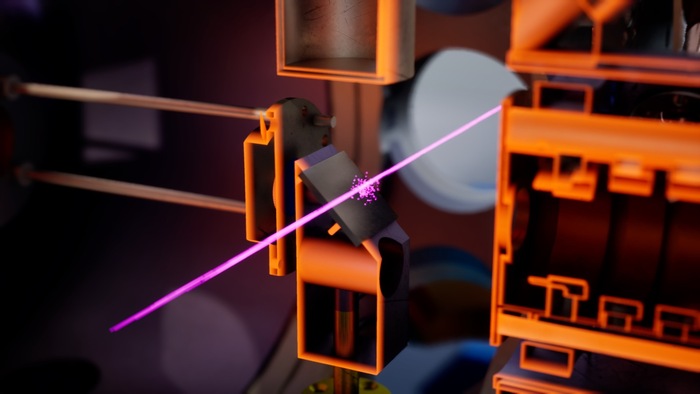Antimatter
research
is
poised for a revolutionary leap
towards
future applications
, such as spectroscopy and imaging for diagnosis.
The goal, pursued for decades, was achieved at
Cern
with AEgIS (The Antimatter Experiment: gravity, Interferometry, Spectroscopy), one of the active experiments in the Antimatter Factory in which Italy collaborates in an important way with the National Institute of Nuclear Physics .
The result, which deserved prominent space in the journal Physical Review Letter, was possible thanks to a
special laser
designed by the Italian Ruggero Caravita, coordinator of the AEgIS collaboration and Infn researcher.
At the same time and using a different technique, a research group from the University of Tokyo obtained a similar result, online on the arXiv website.
The experiment was conducted on a
cloud of positronium
, the lightest of atoms, consisting of an electron and its antiparticle, the positron.
The cloud was cooled with the new laser, based on an alexandrite crystal and capable of guaranteeing high intensity, wide bandwidth and long pulse duration.
"
We have invented the way to cool the positronium cloud
actively with the laser," Caravita told ANSA.
"The idea was born in Italy, at the University of Milan. It took ten years to develop the laser, in a collective effort" which also saw the participation of the CNRS, the French Research Council, and which was later was financed by Cern.
“This result
opens up new avenues of research in antimatter
in several ways,” notes the physicist.
Being able
to create samples of very cold antimatter atoms in the laboratory
allows us to make new measurements: it is "a leap in method that opens up a range of boundless research".
Reducing the temperature of the cloud of atoms from 380 to 170 degrees Kelvin was a challenge because the laser had to hit the positronium atoms before they decayed and consequently had just 142 billionths of a second available.
'Freezing' antimatter atoms means doubling their lifespan and, therefore, being able to use them to carry out experiments.
One of the most interesting consequences "is that it opens the way for us to make a particular object, called a Bose-Einstein condensate of antimatter," Caravita said.
As for matter, "a Bose-Einstein condensate is a cloud of atoms cooled to the point that they cease to be individual and fuse together into a single object that acquires properties. It is a quantum state."
These objects have existed in matter for at least 30 years, but in antimatter they were difficult to obtain.
Having a laser capable of cooling a cloud of antimatter now allows us to carry out experiments that exploit the main characteristic of antimatter, which is that of annihilating itself when it comes into contact with matter, returning light and energy.
"A condensate of antimatter will most likely annihilate all together: this opens up the possibility of controlling the annihilation process and inventing experimental techniques," the physicist said.
For example, it will be possible to produce
gamma rays
(which are
generated only by antimatter
) and, "if we discovered that gamma rays are coherent like the condensate is, then in the future we could use them for new
imaging techniques for diagnosis
, with a much higher resolution."
Italy is at the forefront of antimatter research also in the
Low Energy Antimatter
collaboration
of the Infn and in the
Antimatter Laboratory
of the University of Trento and the National Center of the Infn Tifpa a machine for the production of pulsed beam positronium.
Reproduction reserved © Copyright ANSA

